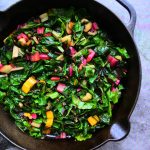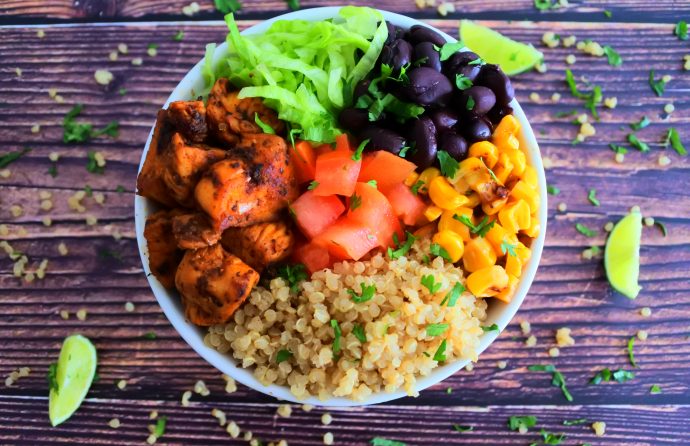Disclosure: This post may contain affiliate links.
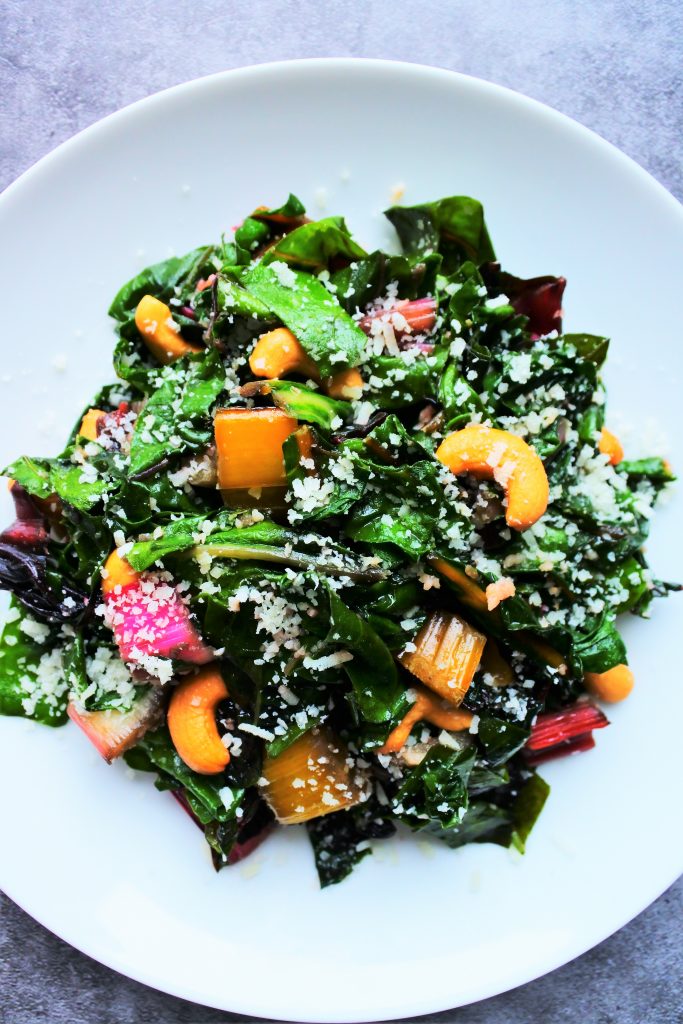
Step aside kale, a new leafy green is taking over the town and that’s Swiss chard!
Packed with healthy nutrients and antioxidants chard has been declared a powerhouse vegetable that was given a nutrient density rating of 89/100 so this is definitely one vegetable you shouldn’t overlook.
Here’s why you’re going to love this dish:
- It’s made using fresh, wholesome and minimal ingredients.
- This side dish is easy and healthy.
- It takes just about 20-minutes to make from start to finish.
- It’s clean eating, gluten-free, keto and paleo friendly as well as vegan and vegetarian friendly!
- It’s low calorie and low carb.
- All parts of it can be used and eaten meaning no waste!
- You can season and adjust the seasonings to suit your personal taste.
- It can be topped and served with anything of you choosing.
So, what is Swiss Chard?
This bundle of leafy greens with sometimes fabulously bright colored stems (depending on the variety) is closely related to beets and spinach. Originating in the Mediterranean and having nothing at all to do with the Swiss or Switzerland, this vegetable is commonly featured in many Italian dishes such as pastas, risottos and soups.
While the root isn’t edible, the leaves and stems most certainly are. Uncooked, chard can be bitter, but cooking it down results in the chard being milder, with a slightly bitter, nutty and earthy flavor notes. Many contend that that Swiss chard is milder than spinach but personally I find it to be earthier, more bitter and with a lot more depth of flavor than spinach.

So what’s the deal with Rainbow Chard?
This is a bit of an interesting situation as there are two forms of “rainbow chard”.
The first is comprised of bundles of chard leaves from different varieties of chard; mostly ruby red chard, bright yellow chard and green chard with a white stem.
The second is a variety of chard known as Bright Lights Blend. The stems vary from white to yellow to pink to orange, red and purple.
So how do I know which of the two I have?
The easiest way to tell is uniformity. Bright Lights Blend is the same variety therefore the leaves and stems tend to be the same length, thickness and size whereas the mixed variety bundles of chard will have stems and leaves of very different sizes and lengths and thicknesses. Can you tell which type I’m using today from the image above?
Does the type I have matter? Is there a nutritional difference?
Honestly, no. The differences are minute enough to be negligible. Any type of chard is a good kind of chard!
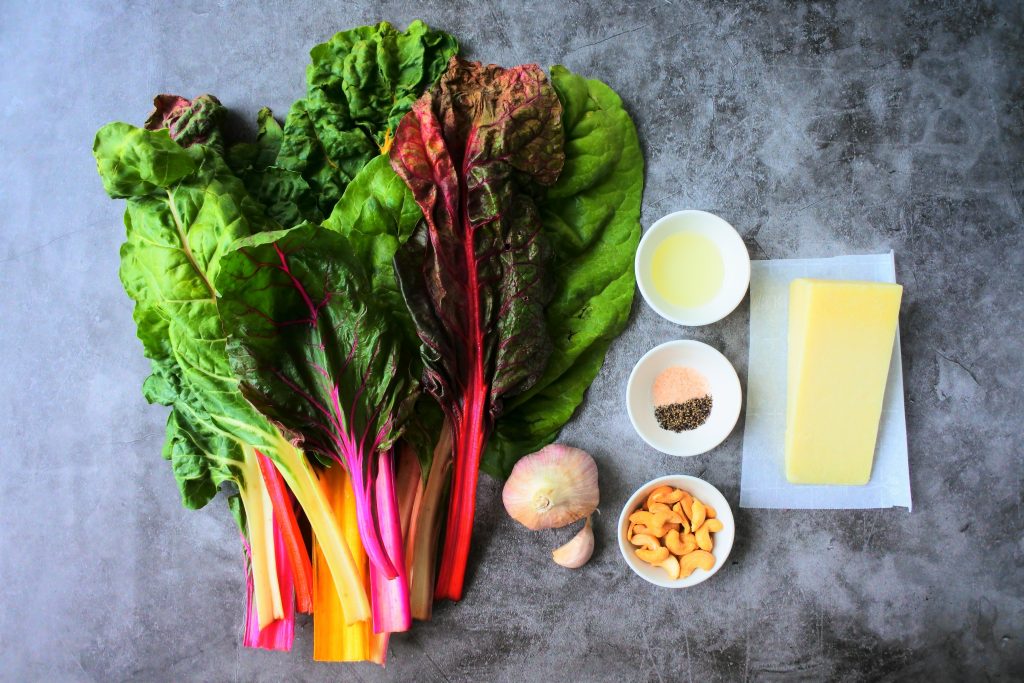
To make this recipe you’ll need the following ingredients:
- Chard: I’m using a mixed variety of rainbow chard (mainly for aesthetics) but you can honestly use any type of Swiss chard you like.
- Garlic: Fresh garlic works best. You can also use some finely diced onions if you like as well in addition to your garlic.
- Oil: I’m using an extra light olive oil but you can use any clean label oil of your choosing. If you like the flavor, coconut oil is a wonderful oil of choice to use here!
- Salt: I’m using a pink Himalayan but you can also use sea salt.
- Ground pepper: Fresh or pre-ground.
These are the base ingredients you’ll need. Optional ingredients to top or finish your dish include:
- Nuts: I’m using cashews but you can use pine nuts or any nut of your choosing.
- Cheese: I’m using a Parmesan but any hard salty cheese (such as Pecorino-Romano) works well.
- Lemon or Lime wedges: The acid of the citrus perfectly complements the earthy flavor of the greens.
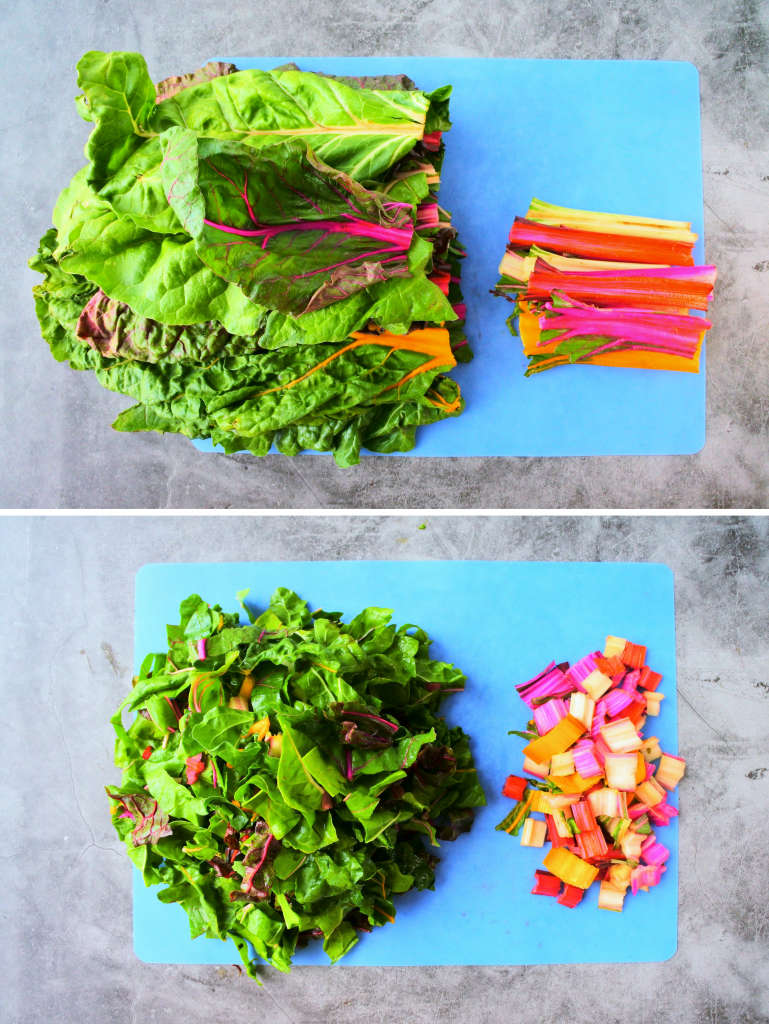
To start making this dish you’ll need to rinse each leaf under cool running water to remove and dirt or insects that might be on it. Once done, pat each leaf dry and then separate the leaves from the stems. Chop both into smaller (bite-sized) pieces. Believe it or not we’re half way done already!
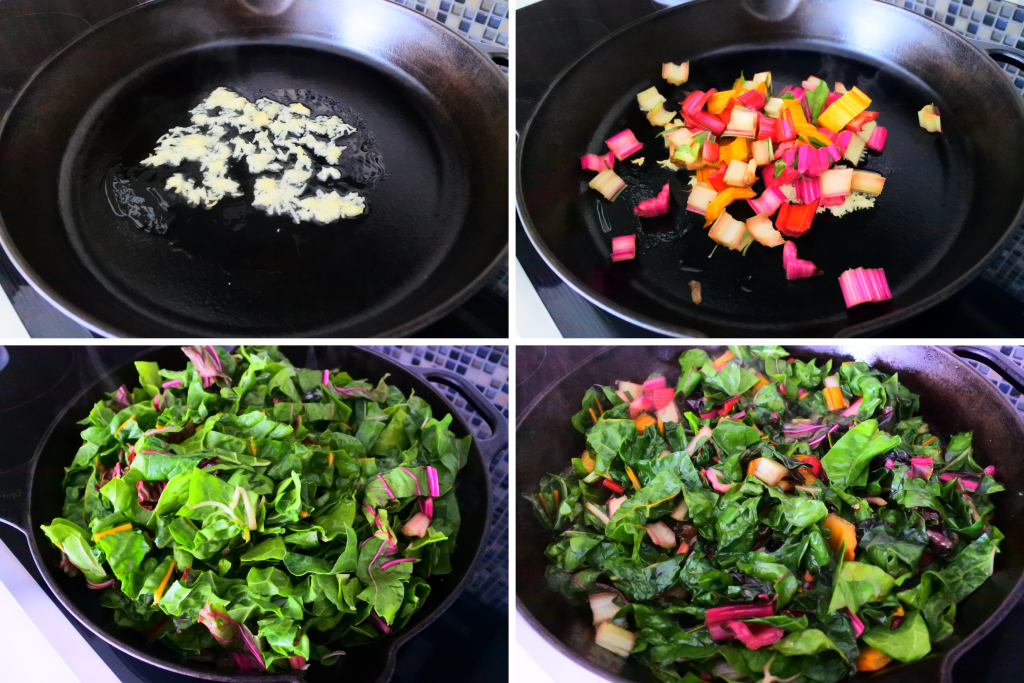
Next, add your oil and grated garlic (and onions if you like) to a skillet and quick fry until fragrant. Add the chopped stems and fry for a minute to begin softening them up. Then add in the chopped leaves and turn them to coat them in the oil and garlic and allow them to cook down for a few minutes until fully wilted. Season your greens to taste with salt and pepper and that’s it! You’re essentially done!
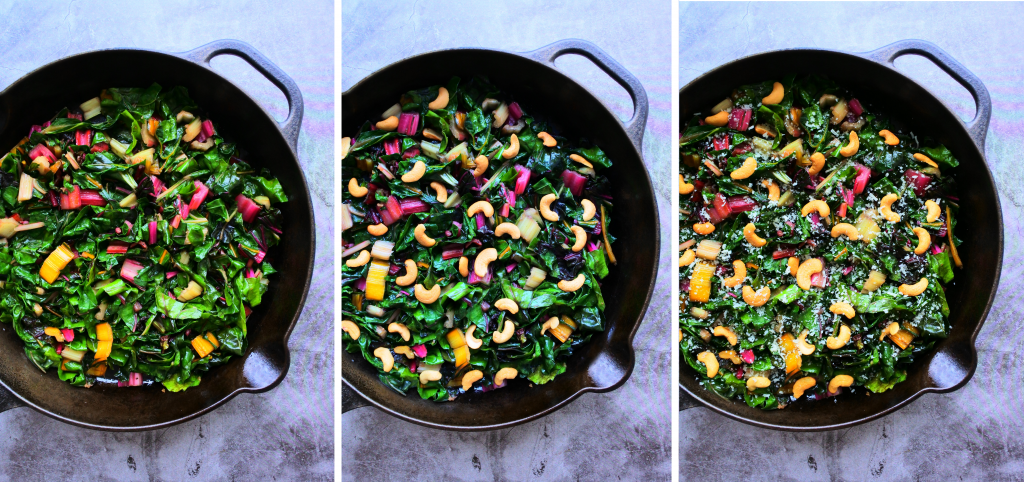
All that’s left to do is serve it up as is or dress it up a bit either with some nuts and/or cheese. Serve your chard with a wedge of lime or lemon for the ultimate finishing touch. The acid of the lime and earthiness of the chard pair perfectly.
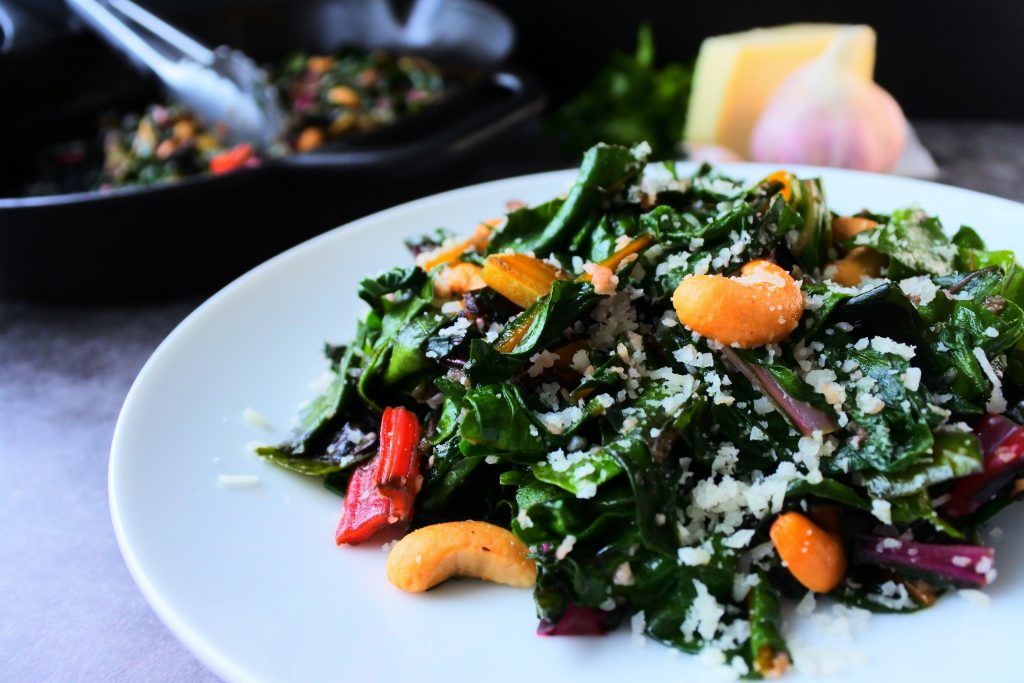
Simple and wholesome, and thrown together in no time. I love serving this side with a bowl of steamed brown rice and some fish. My absolute favorite pairing is a smoked trout or salmon. The saltiness and smokiness beautifully contrasts with the earthy richness and slight bitterness of the greens, and as a meal it’s incredibly nourishing.
Simple Sautéed (Rainbow) Chard
Ingredients
- 1 bundle Swiss Chard rainbow or any variety
- 1 tbsp extra light olive oil or coconut oil
- 1 clove garlic finely grated
- ½ tsp Himalayan salt to taste
- ½ tsp ground black pepper to taste
Optional for topping:
- ¼ cup Parmesan cheese or any hard salty cheese (optional)
- ¼ cup cashews or pine nuts (optional)
- wedges of lime or lemon
Instructions
- Rinse each leaf under cold running water to remove any dirt and pat them dry.
- Slice the stems from the leaves and chop both sections up.
- To a pan set on medium heat, add the oil and grated garlic and fry until just fragrant.
- Add the stems and quick fry for 1 minute before adding in the chopped leaves and sauteing for 3-4 minutes until all the leaves have wilted.
- Season your greens with salt (and pepper) to taste.
- Optional: Allow your greens to cool a bit and top with nuts and cheese. Serve with wedges of lime or lemon (this pairs especially well is serving alongside seafood)
- Store any leftovers in an airtight container for up to 5 days or freeze it for up to 9 months.
